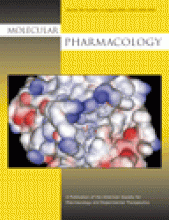Abstract
In this study, we report the homo- and hetero-oligomerization of the human histamine H4R by both biochemical (Western blot and immobilized metal affinity chromatography) and biophysical [bioluminescence resonance energy transfer and time-resolved fluorescence resonance energy transfer (tr-FRET)] techniques. The H4R receptor is the most recently discovered member of the histamine family of G-protein-coupled receptors. Using specific polyclonal antibodies raised against the C-terminal tail of the H4R, we demonstrate the presence of H4R oligomers in human embryonic kidney 293 and COS-7 cells heterologously overexpressing H4Rs and putative native H4R oligomers in human phytohaemagglutinin blasts endogenously expressing H4Rs. Moreover, we show that H4R homo-oligomers are formed constitutively, are formed at low receptor densities (300 fmol/mg of protein), and are present at the cell surface, as detected by tr-FRET. The formation of these oligomers is independent of N-glycosylation and is not modulated by H4R ligands, covering the full spectrum of agonists, neutral antagonists, and inverse agonists. Although we show H4R homo-oligomer formation at physiological expression levels, the detection of H1R-H4R hetero-oligomers was achieved only at higher H1R expression levels and are most likely not physiologically relevant.
- Received November 15, 2005.
- Accepted April 27, 2006.
- The American Society for Pharmacology and Experimental Therapeutics
MolPharm articles become freely available 12 months after publication, and remain freely available for 5 years.Non-open access articles that fall outside this five year window are available only to institutional subscribers and current ASPET members, or through the article purchase feature at the bottom of the page.
|






